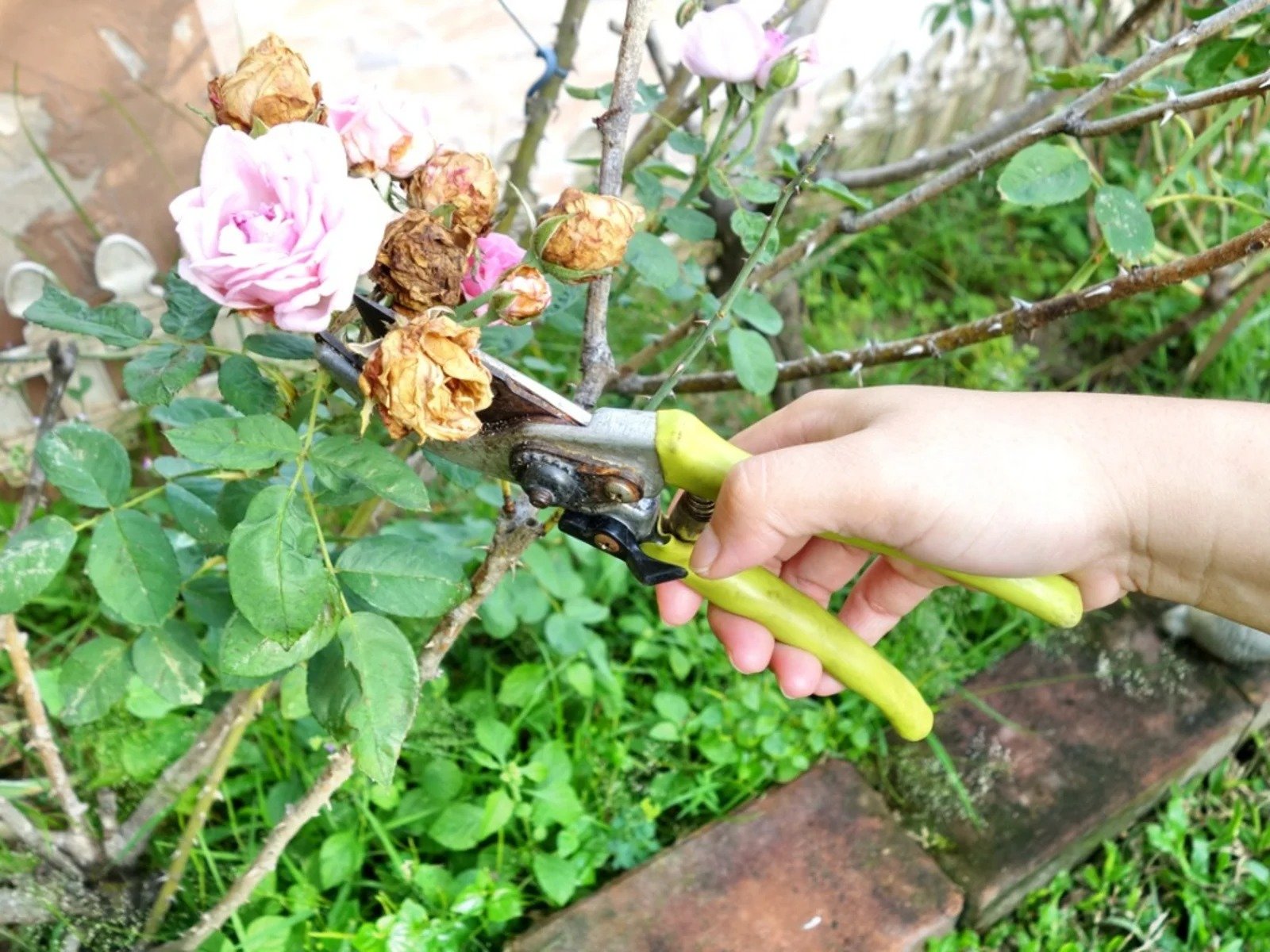Table of Contents
Have you planned to grow roses in your garden? If you have come here to learn when to prune roses, perhaps you want to or have grown roses before. It is an essential practice that encourages healthy growth, provides disease resistance, and increases flower production. Pruning also ensures that the plant receives sufficient sunlight and airflow to reduce the possibility of fungal infections.
Nonetheless, new gardeners may find pruning daunting, and they might ask themselves when and how to prune roses. Pruning roses is a delicate task that demands attention if you want to cultivate them. One may not need to be a professional to handle these; however, having knowledge of these plants while pruning them is important for overall growth and development. This guide will help you to master this very art, including the use of ideal implements and the correct time you can choose to prune these flowers.
How to Prune Roses
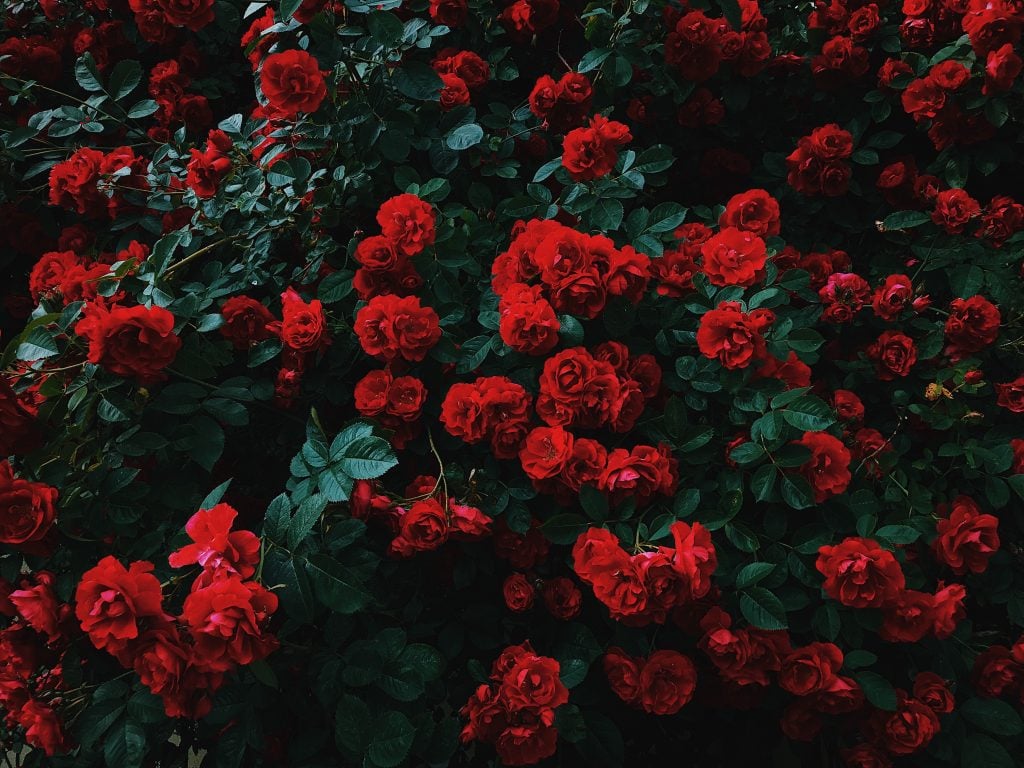
Before you start pruning your roses, having the appropriate types of equipment is important while performing it. The required tools for this pruning process are-
- Pruning Gloves: Protection is a must. These gloves with long sleeves will protect you from those prickly things, so wearing gloves is essential.
- Shears: Like a chef needs a knife to complete their tasks, you need these shears to perform yours. These shears will help you get precise cuts without damaging the flower.
- Long Arm Sleeves: These will protect your entire arm from the thrones.
When to Prune Roses Based on Their Types
It is really important to have knowledge of the rose species you own before trimming because each kind of these flower requires specific pruning techniques. Below is a basic guide on how and when to prune roses-
1. Hybrid Tea Roses
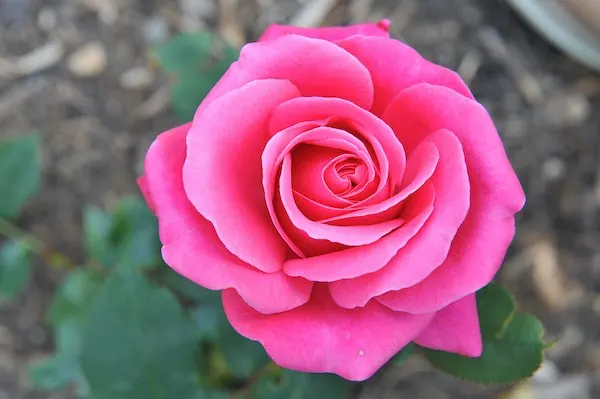
These types of roses need to be pruned by removing 6-8 inches of the plant from the soil, keeping only two to three robust canes. Doing so will provide extensive growth, and most flower bloom. You may prune them during late winter.
2. Floribunda Roses
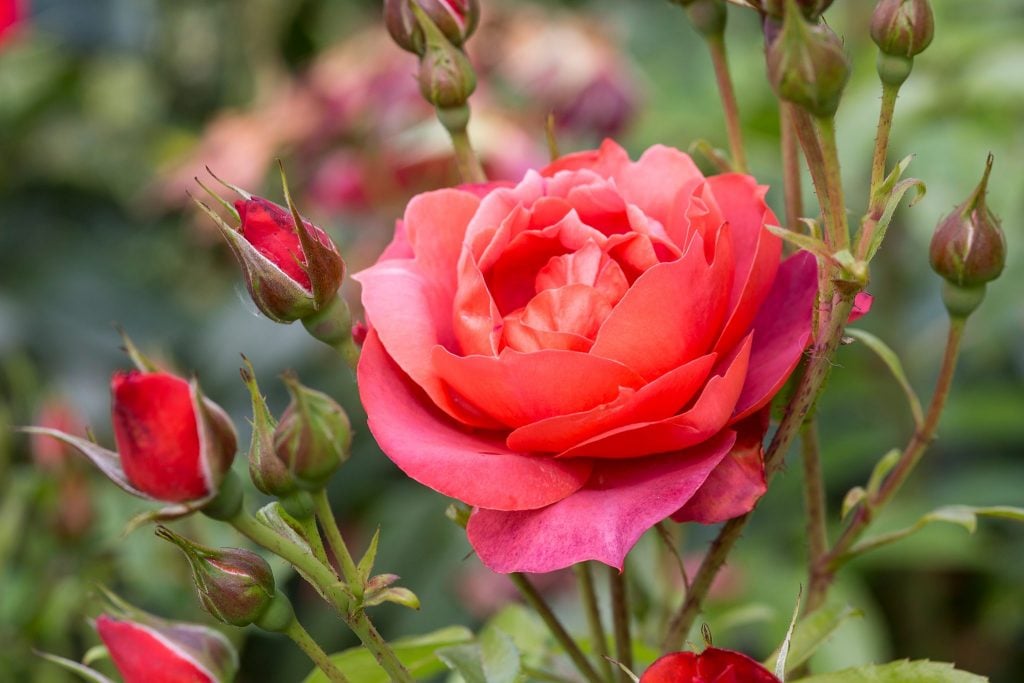
These roses blossom on newly grown wood: therefore, prune them back by removing 12-18 inches of the plant from the soil while retaining three to five healthy canes. You may prune them during late winter too.
3. Climbing Roses

Minimal pruning is required for these roses. It is necessary to get rid of any decaying or diseased wood, and lengthy stems ought to be cut back to manage their shape and size. These should be pruned in winter, i.e., from December to February.
4. Shrub Roses
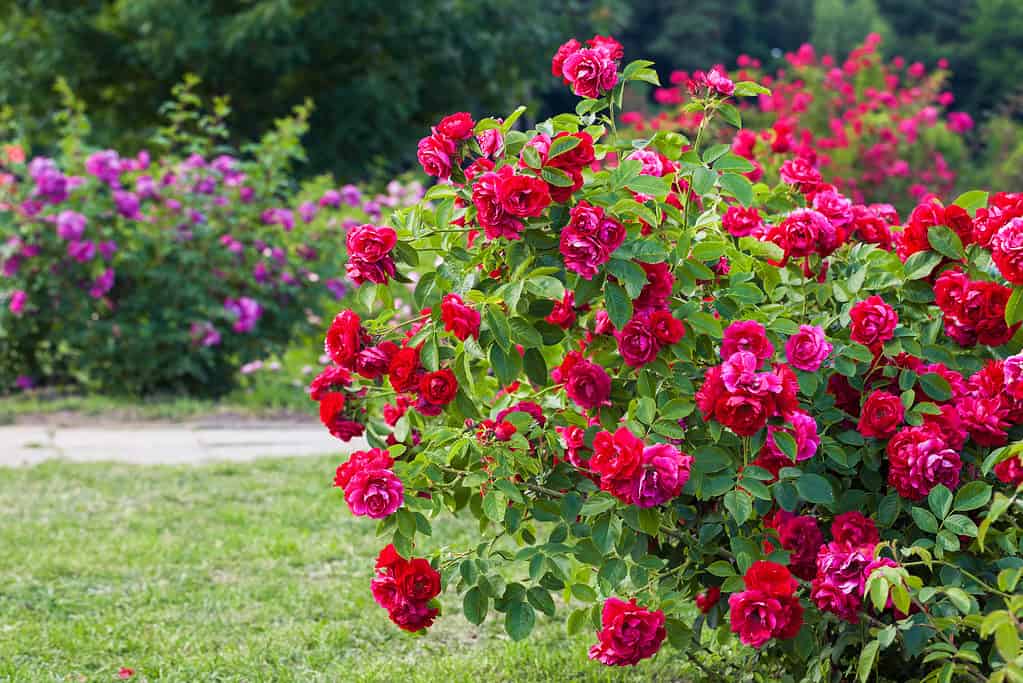
These roses are low-maintenance and need only minimal pruning. Take off any dead, diseased, or damaged wood, and trim lengthy stems to maintain a compact shape. You can prune them at the beginning of spring.
Easy Steps to Prune Your Roses
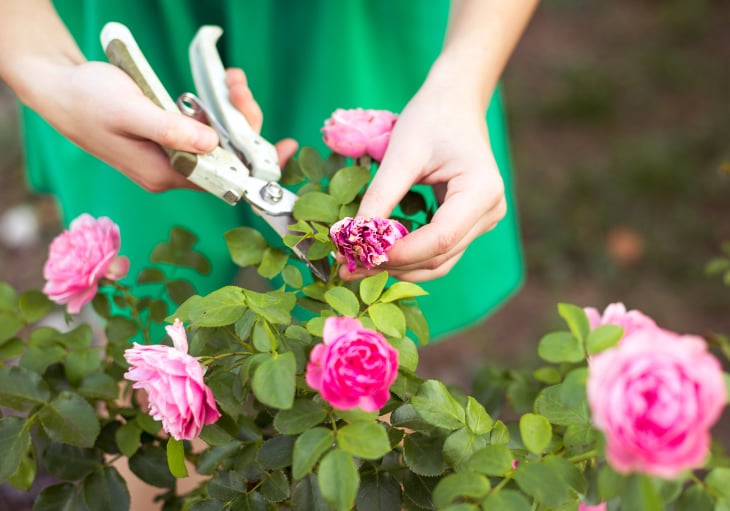
Step 1: Removing Damaged and Dead Twigs and Leaves
Begin the process of arboreal upkeep by removing any dead, diseased, or flawed sections of the plant. Firstly cut the dried or discoloured twigs until you reach the healthy section. Do this but cutting it at an angle of 45 degrees, about a quarter inch above the healthy growth point.
Step 2: Cut the Outward-Facing Bud
During pruning, cutting off an external-facing bud promotes growth and optimises the airflow around the plant. Try to search for a bud that is oriented away from the plant’s main stem and cut it approximately a quarter inch over the growth point.
Step 3: Remove All the Tiny or Thin Bushes
Please take note of any canes that are crossing each other, as they can create friction and may damage or spread disease to other parts. Remove the tiny or thin bushes and canes that are rubbing each other to ensure the improvement in the overall well-being of the plant.
Step 4: Shaping the Plant
After clearing away any lifeless, dead, or broken wood or leaves, as well as the crossing canes, it is time to shape the plant. Determine the shape as per your preference for your rose plant to start shaping it. Keep in mind to cut any outward-facing bud to maintain a perfect shape.
Step 5: Cleaning
After completing the pruning process, tidying up any debris around the plant and disposing of it is important. Leaving behind any dead or diseased wood is not recommended since it can invite pests and diseases. So don’t forget to clean up thoroughly to ensure the plant’s health and prevent future issues.
Importance of Pruning Roses
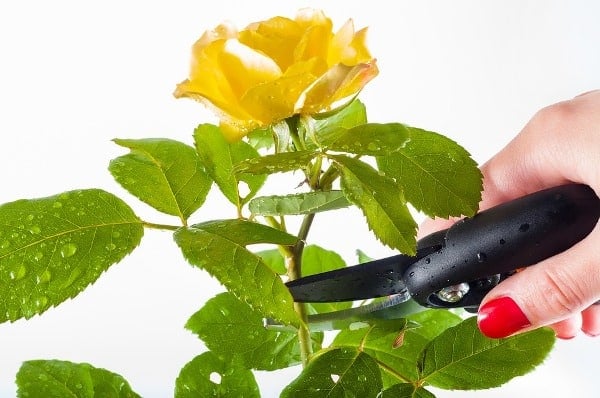
Pruning roses is the process of removing dead or diseased wood, shaping the plant, and promoting new growth. Rose pruning also helps improve your roses’ overall health and impression. Pruning is essential practice to ensure that your plants remain healthy and retain their proper shape.
This exercise becomes even more critical when it comes to the cultivation of roses, as a well-executed pruning technique can significantly impact their overall health, disease resilience, and flower production. By trimming the rose bushes, you can facilitate their access to ample sunlight and airflow, thereby reducing the likelihood of the onset of harmful fungal diseases.
Following are a few reasons why you should prune–
- It helps grow the plant as weak, dead, dried wood and leaves are removed.
- It helps to develop new stems and buds in the plant.
- Also, it gives your garden a beautiful look for your friends to envy!
Some Tips For Pruning Roses
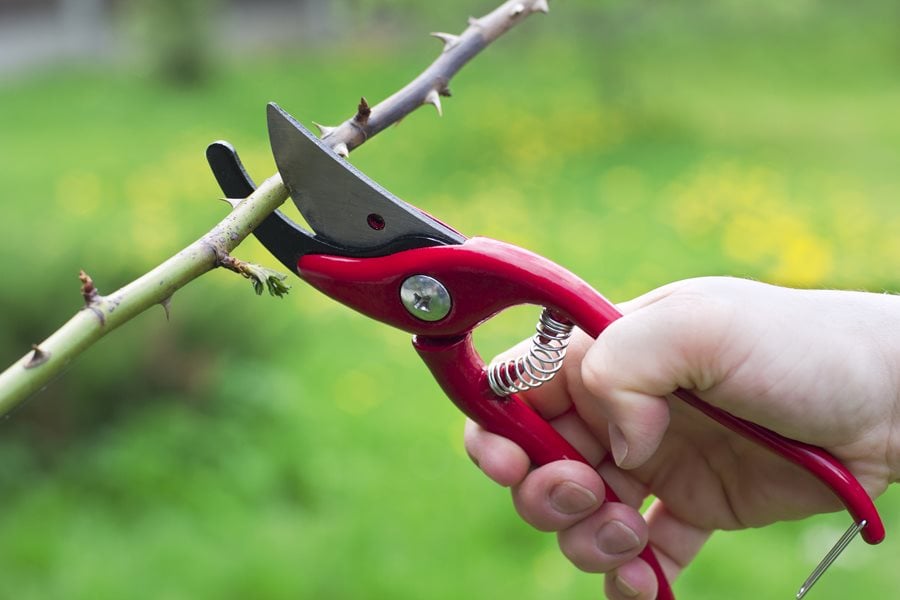
1. Prune Regularly
Pruning is a crucial practice for maintaining the vitality of your rose bushes. Therefore, it is strongly recommended by experts to execute this process once every year, particularly during the dormant phase or in the early onset of spring, prior to the beginning of new growth. Nevertheless, if you happen to notice any withered or diseased stems or if the foliage of your roses has turned too dense, you can undertake pruning without any hesitation at any point of the year!
2. Don’t Be Afraid To Cut
Don’t be afraid to cut them. It stimulates the emergence of new growth and an abundance of blooms! Despite common misconceptions, cutting canes back to around ⅓ to ½ of their original height will not harm the plant but motivate it to sprout from the base.
3. Keep Observing Them for Diseases
Observance of the key to ensuring your roses remain free from diseases. Recognisable ailments that commonly damage roses include black spots, powdery mildew, and cankers on the canes. As soon as you perceive any of these symptoms, remove the affected canes immediately to avert the spread of the infection to the rest of the plant.
4. Maintain Your Pruning Tools
Proper maintenance of your pruning tools is crucial for seamless pruning. After each use, cleanse your tools meticulously with a disinfectant solution to ward off disease. Moreover, it is imperative to sharpen your pruning tools regularly, enabling them to cut precisely and prevent damage to the plant.
Summing All Up!
Pruning roses is an essential task for gardeners who aspire to cultivate healthy, illness-resistant roses and increase flower growth. Pruning has the potential to significantly influence a plant’s general health, diseased wood and overall growth. To execute pruning properly, one must possess the necessary tools, including pruning gloves, shears, and long arm sleeves, and stick to a chronological process that involves the removal of damaged and dead branches and leaves, cutting outwards-facing buds, eliminating small or thin shrubs, shaping the plant and cleaning up.
It is also of paramount importance to have an understanding of specific pruning methods tailored to the particular species of rose that you have. Finally, after all the work, keeping your tools properly will help them to last longer.
By consistently practising pruning roses, your rose shrubs will remain hale and hearty, with a stunning appearance for several years.
Frequently Asked Questions
Why Are Pruning Roses Important?
Pruning stands as a crucial practice when it comes to maintaining the health and appearance of the rose plant. This act facilitates the sprouting of the shoots, the removal of withered or pathological timber, and the regulation of the plant’s figure to ensure its best growth and blossoming.
When Should You Prune Roses?
The perfect moment for trimming rose shrubs is during the season of inactivity or early spring, prior to the emergence of fresh foliage. Nevertheless, trimming may be executed at any time throughout the year if the shrub has unwell or dried branches or if it is becoming overly dense.
How Much Should I Prune the Roses?
It is advisable to reduce the length of the stems to roughly one-third to one-half of their initial altitude to stimulate the growth of nascent foliage from the root base of the plant and to mould the shrub in a manner that fosters its maximum expansion.
What to Do When My Roses Suffer from Any Disease?
When you find signs of disease in your plant, like black spots, powdery mildew, or cankers on the stems, it becomes necessary to eliminate the infected canes as soon as possible. This measure is important to stop the disease from spreading to the remaining shrub.
How and Why Do I Keep My Pruning Clean?
To guarantee the seamless execution of the trimming process, it is crucial to sanitise your cutting equipment using a disinfectant solution after every use. This action is vital to forestall the diffusion of disease. Moreover, honing the pruning tools on a regular basis ensures that they make cuts precisely without injuring the shrub.
Can I Prune Roses During Summer?
As a general rule, it is ill-advised to do trimming activities during summer, as it may kindle new growth that might not have sufficient time to develop before the advent of winter. Nonetheless, if there is a pressing need to eliminate any deceased or unwell wood or to fashion the shrub, it may be executed with circumspection.

